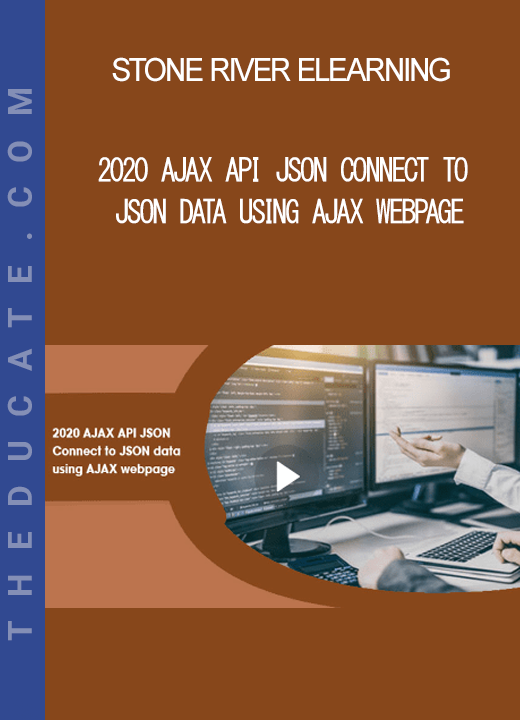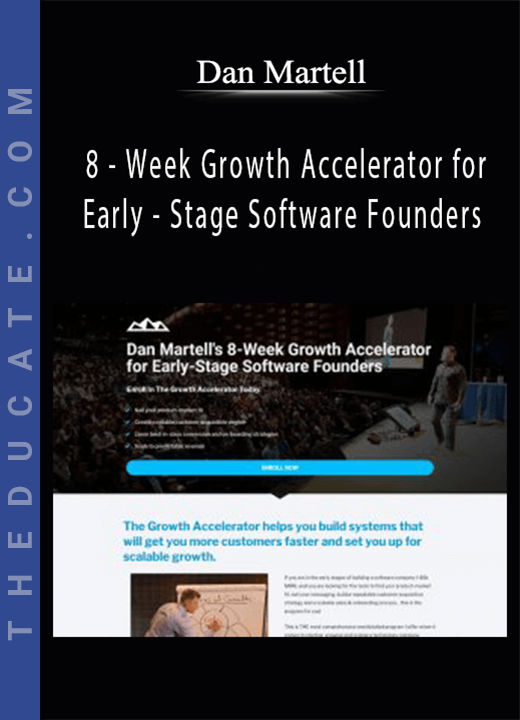Description
Stone River Elearning – 2020 AJAX API JSON Connect to JSON data using AJAX webpage
AJAX, JSON data and JavaScript Objects
Explore how you can connect to various endpoints on the web and get JSON data to use on your website.
JSON data and JavaScript Objects
JavaScript Object Notation (JSON) is an open-standard file format or data interchange format that uses human-readable text to transmit data objects consisting of attribute–value pairs and array data types. It is a very common data format, with a diverse range of applications.
JSON is a language-independent data format. It was derived from JavaScript, but many modern programming languages include code to generate and parse JSON-format data. The official Internet media type for JSON is application/json. JSON filenames use the extension .json.
AJAX (“Asynchronous JavaScript + XML”) is a set of web development techniques using many web technologies on the client side to create asynchronous web applications. With Ajax, web applications can send and retrieve data from a server asynchronously (in the background) without interfering with the display and behavior of the existing page. By decoupling the data interchange layer from the presentation layer, Ajax allows web pages and, by extension, web applications, to change content dynamically without the need to reload the entire page.
In practice, modern implementations commonly utilize JSON instead of XML.
Course Covers
- JavaScript Objects and how they are used in code to retrieve values and store groups of related data sets
- JavaScript Arrays – a data structure commonly used in JSON to contain Objects
- JSON vs JavaSCript Objects
- Iterate Array Contents
- JSON parse and Stringify
- Tools online to help connect to endpoints and debug AJAX requests
- Use of JavaScript Fetch to return content
- GET and POST methods to web endpoints
- Various examples of open web APIs
Source Code is included.
JavaScript Object
An object is a collection of related data and/or functionality.
- Functions can be contained in JavaScript objects they are referred to as methods within the object.
- JavaScript objects names don’t need quotes, can be single, double or none.
- Values can be Strings, Numbers, Booleans, Arrays, Objects
Create an object setting a variable name and assigning the {} to the variable.
Object names can hold values of other objects and arrays
Can go multiple levels deep, as many as needed.
Dot notation : The object name (person) acts as the namespace, then a dot, then the item you want to access.
Bracket notation : Similar format to arrays, instead of using an index number to select an item you are using the name associated with each member’s value.
JavaScript Array
An Array can hold multiple values
Arrays cannot use strings as element indexes but must use integers.
Arrays are zero based, first index value is always 0;
Array values can be strings, numbers, booleans, arrays or objects.
The design of objects and arrays is to hold lots of content. You can loop through the content in a number of ways using JavaScript.
You can loop through the data in the array using a number of methods in JavaScript. Arrays need the index to find the value associated with it. If objects are contained within you should structure them the same way so it is easier to check the values contained.
Objects have length so using a for loop is possible. There is also Object.entries which can get the key and the value from the object.
Keep data structured the same so that you can easily determine where the values are located.
The JSON.stringify() method converts a JavaScript object or value to a JSON string
The JSON.parse() method parses a JSON string, constructing the JavaScript value or object described by the string
The JSON object contains methods for parsing JavaScript Object Notation (JSON) and converting values to JSON.
- Objects and Arrays: Property names must be double-quoted strings; trailing commas are forbidden.
- Numbers: Leading zeros are prohibited; a decimal point must be followed by at least one digit. NaN and Infinity are unsupported.
Please note that the scope of this course using JavaScript and JSON data outputting via JavaScript. If you are looking for a more detailed JavaScript course this course is not for you. Simple course with limited scope designed to be topic specific.
Taught by an instructor with over 20 years of Web Development experience.
If you’ve been looking to get ed with AJAX and JSON- THIS COURSE IS FOR YOU!!!!
Nothing to lose – Fast friendly support is always available to help if you need it.
Please note that the SCOPE OF THIS COURSE IS Creating a simple API and JSON and will not cover complex commands and everything about JavaScript, HOW TO GET ED COURSE – if you are looking at more detailed node or JavaScript content this is not for you.
Who this course is for:
- Web designers
- Web Developers
- Anyone who is building a website
- Webmasters and web coders creating web content
Requirements:
- JavaScript
- Programming and coding knowledge
- HTML and some programming experience
Course Curriculum
- API JSON Introduction (2:28)
- Introduction to JSON (3:34)
- JavaScript Objects (5:31)
- JavaScript Arrays (2:27)
- Output Contents (3:14)
- JSON Stringify JSON Parse (3:01)
- Validate lint JSON (3:05)
- JavaScript Fetch (4:05)
- Fetch Web APIs (2:36)
- JavaScript Arrow (1:55)
- Fetch Options (3:04)
- CORS with request (2:28)
- More Open APIs Practice (3:23)
- Fun with APIs Tools and More (4:35)
- API Next Page (5:31)
- Post method send data (3:26)
- Practice API endpoints (4:49)
- More API endpoints AJAX request Exercise and JSON data (4:13)
- API JSON conclusion (3:20)
Sale Page: https://stoneriverelearning.com/p/2020-ajax-api-json-connect-to-json-data-using-ajax-webpage
Archive: https://archive.ph/wip/eLaMW







Reviews
There are no reviews yet.